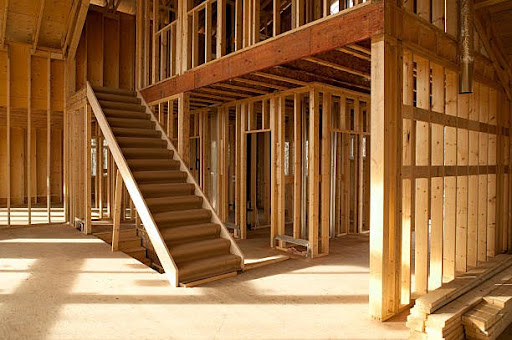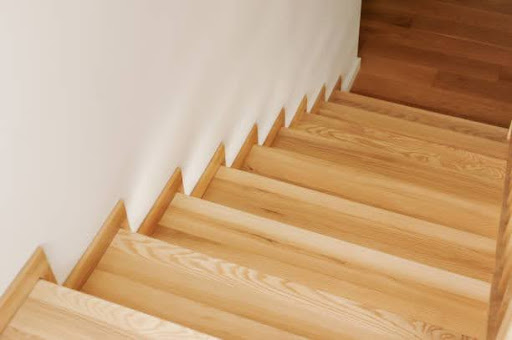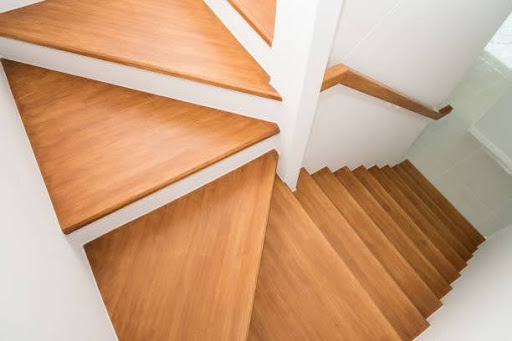SYDNEY DECKING SOLUTIONS
Constructing a timber staircase is a significant investment that can enhance both the aesthetic appeal and functionality of your home. However, understanding the costs involved in a staircase project is crucial for homeowners contemplating a renovation. In this article, we will explore the factors influencing staircase costs, how to calculate the cost of a new staircase, the average costs associated with constructing timber staircases, building regulations to consider, and tips for selecting the right staircase design.
What are the Factors Influencing Timber Staircase Costs?

The material costs are one of the primary factors influencing the overall cost of your staircase. The type of timber chosen for the treads, risers, and balustrades can significantly affect the price. For instance, hardwoods such as oak or maple are generally more expensive than softwoods like pine. The average cost of timber materials can range significantly, with prices around AUD 200 per square metre for quality timber. Additionally, the cost of staircase materials might also include other components, such as handrails and fittings, which contribute to the total expense. It’s essential to consider the durability and maintenance requirements of the timber you choose, as higher-quality materials can lead to long-term savings.
Labour costs represent another major component of the total cost of building a new staircase. The complexity of the staircase installation directly impacts the labour costs involved. A straight staircase may require less labour compared to a more intricate design, such as a spiral staircase or floating stairs, which necessitate skilled craftsmanship. Furthermore, local labour rates can vary, affecting the overall cost of your staircase project. It’s advisable to obtain multiple quotes from contractors to ensure you are getting a competitive rate for the labour associated with your staircase construction.
The design of your staircase plays a critical role in determining the final cost. Custom designs, such as glass staircases or metal balustrades, can lead to increased material and labour costs. Moreover, the size of the staircase also influences the staircase cost; larger staircases require more materials and may necessitate additional structural support. When choosing a staircase design, it’s essential to balance aesthetics with budgetary constraints to ensure that your investment aligns with your financial capabilities.
How Can I Calculate the Cost of a New Staircase?
To accurately calculate the cost of your new timber staircase, begin by measuring the space where the staircase will be installed. Take into account the height of the stairs and the required number of treads and risers. This initial measurement will provide a foundation for estimating the material needs and overall costs. Next, consider the type of timber you wish to use and research the current market prices for those materials. You can then multiply the square metre price by the total area of the staircase to get an estimate of the material costs.
Once you have a grasp on the material costs, it’s time to factor in the labour costs. Contact local contractors to obtain estimates for the installation of your timber staircase. Be sure to discuss the specifics of your staircase design, as well as any additional features such as handrails or balustrades that could affect labour time and cost. By combining your material costs with estimated labour expenses, you can derive a comprehensive view of the total cost of your staircase.
What is the Average Cost of Constructing a Timber Staircase?

The average cost of constructing a timber staircase can vary widely depending on the design. For instance, a straight staircase typically ranges from AUD 1,500 to AUD 3,000, while a more complex design like a spiral staircase can cost between AUD 4,000 and AUD 7,000. The average costs are influenced by both the materials used and the intricacies of the design. Understanding these cost ranges can help homeowners set realistic budgets for their staircase projects.
Comparing Costs of Straight vs. Curved Staircases
When comparing the costs of straight versus curved staircases, it’s evident that curved designs tend to be more expensive. The labour costs associated with crafting a curved staircase are higher due to the precision required for cutting and fitting the timber. Additionally, curved staircases often require more materials, increasing the overall cost. Therefore, if you are considering a budget-friendly option, a straight staircase might be a more cost-effective choice.
Cost Variations Based on Location
Location also plays a significant role in the cost of building a new staircase. Urban areas may experience higher labour costs and material prices due to demand and increased living expenses. Conversely, rural areas might offer lower costs but could have limited availability of certain materials or skilled labour. When planning your staircase installation, consider the regional market conditions to better understand how location will influence your staircase costs.
What Building Regulations Should I Consider for a Timber Staircase?
Building regulations are crucial to ensuring that your timber staircase meets safety and structural standards. These codes dictate various aspects of staircase construction, including dimensions, load-bearing capacity, and appropriate materials. Familiarising yourself with local building codes is essential to ensure compliance and avoid potential fines or complications during the installation process. Consulting with a professional contractor who understands these regulations can help streamline the process of building your staircase.
Safety Regulations for Balustrades and Handrails
Safety regulations regarding balustrades and handrails are particularly important in staircase construction. These regulations often require specific heights and designs to ensure that staircases are safe for use. For instance, handrails must typically be installed at a height that accommodates both adults and children, and balustrades must be designed to prevent falls. Adhering to these safety regulations not only protects users but also ensures that your staircase complies with local codes.
Permitting Process for Staircase Installation
The permitting process is another aspect of building regulations that must be considered when constructing a timber staircase. Depending on your location, you may need to apply for a permit before commencing construction. This process usually involves submitting plans and specifications for your staircase to ensure that it meets all building codes and regulations. Failing to obtain the necessary permits can lead to costly delays and complications, so it’s essential to be proactive in securing the required approvals before beginning your staircase project.
How to Choose the Right Design for Your Timber Staircase?

When it comes to selecting the right design for your timber staircase, there are several popular options to consider. Straight staircases are the most common, offering simplicity and ease of construction. Curved staircases provide a more elegant look, while spiral staircases can save space in smaller areas. Floating stairs create a modern aesthetic, giving the illusion of steps suspended in mid-air. Each design has its own unique appeal and can complement various home styles; therefore, it’s essential to choose a design that aligns with your personal taste and the overall aesthetic of your home.
When selecting a staircase design, consider factors such as the size of the staircase, the intended use, and the overall style of your home. The design should not only be visually appealing but also functional and safe. Additionally, consider your budget and whether a more elaborate design is feasible without compromising other areas of your renovation. Assessing these factors will help you make an informed decision that meets your needs and preferences.
If you’re working with a limited budget, there are several cost-effective design options available for timber stairs. Opting for a straight staircase with simple timber treads and a basic handrail can significantly reduce both material and labour costs. Additionally, consider using less expensive timber types while still maintaining quality. By prioritising essential design elements and keeping the overall structure simple, you can create an attractive and functional timber staircase without breaking the bank.
Conclusion
The cost to construct a timber staircase can vary based on materials, design, and labour. Simple designs may start around AUD 1,000, while more complex staircases can exceed AUD 5,000. It’s important to consider the quality of the timber and any additional features you want. Getting quotes from different builders can help you find the best price. Overall, investing in a well-made timber staircase can enhance your home’s value and style.
FAQS
The main factors influencing staircase costs include the type of stairs, materials used, and labour costs. For example, a basic staircase made from standard wood will have a lower cost than floating staircases made from premium materials. Additionally, the complexity of the staircase design can also affect the overall cost.
The average staircase cost can vary widely, but most homeowners can expect to pay between £1,000 and £5,000 for a standard timber staircase. The cost of a staircase will depend on the materials chosen and the type of stairs you need, such as straight or spiral designs.
There are many types of staircase designs available, including straight, L-shaped, U-shaped, and floating staircases. Each design has its own aesthetic appeal and cost implications. Choosing a more intricate design may lead to higher costs due to additional labour and materials.
Material costs play a significant role in determining the overall price of a staircase. Common materials like softwood are more cost-effective compared to hardwoods or luxury options like marble staircases. The type of wood you choose will greatly influence the final cost.
Labour costs for constructing a timber staircase can vary based on location and complexity. On average, labour and materials together may account for 50–70% of the total cost of a staircase. Hiring experienced professionals may lead to higher costs but ensures quality work.
Yes, you can renovate your existing staircase instead of building a new one. Renovating may be more cost-effective and can enhance your home’s appeal without incurring the higher costs associated with new builds. Simple updates like refinishing or adding new railings can make a big difference.
The cost difference between interior and exterior staircases often comes down to materials and durability requirements. Exterior staircases may require weather-resistant materials, which can increase the overall cost compared to standard interior designs. Depending on your needs, exterior options may include metal staircases or treated wood.
Yes, it’s important to consider regulations such as the national construction code when constructing a staircase. These codes ensure safety standards are met, which could affect your design choices and ultimately influence the cost of a staircase. Compliance with these regulations might add to labour and material expenses but is essential for safety.
Request a quote
Related Posts
-
Pergola Cost 2025: How Much Does It Cost to Build A Pergola in Sydney?
-
Know the Difference Between a Carpenter and Joiner.
-
The Best Timber You Should Use for Making Gates and Fences
-
Build Your Own Timber Gate: A DIY Guide
-
Entrance Doors: The Beauty of Timber Front Doors with Glass
-
Learn How To Stop Dry Rot and Wet Rot From Spreading
Ready to Start Your Dream Project?
Reach out to us today and take the first step towards a stunning addition to your Sydney home..
- Licensed And Insured
- 35+ Years Experience
- No-Obligation Free Quotes
CONNECT WITH US
Digital Marketing Agency Sydney – Hash Media